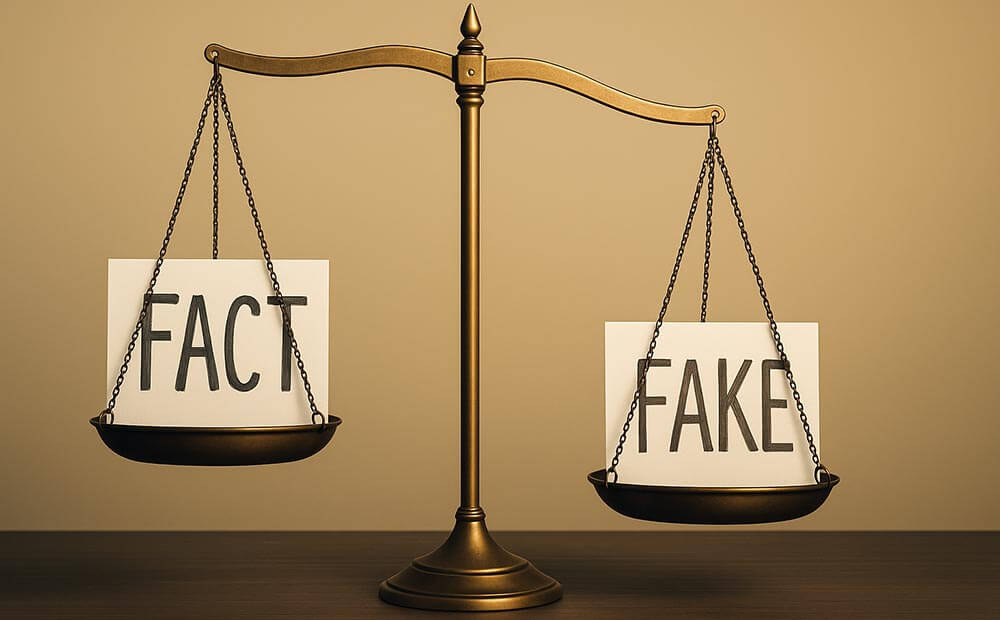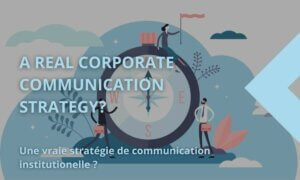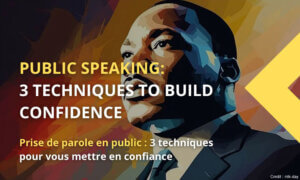The media have evolved dramatically, both in form and content. The volume of information in circulation is growing exponentially. The power of AI and digital profiling is multiplying targeted information through social networks. Finally, the way we consume information has changed: it is more instantaneous, skimmed, and occurs through short, quick visual formats.
In this context, the time you have to verify the validity of the information you consume is almost zero. Journalists often lack the same time to verify their sources. Others even take pleasure in creating or disseminating information that is likely incomplete or false.
This article presents the main strategies for avoiding the pitfalls of disinformation. But these aren’t foolproof. It will also allow you to discover the beliefs of SKILLS’s Directors of Communication to help you fight them more successfully.
Understanding the current information landscape
You’re probably wondering, “How can I make my voice heard in this sea of conflicting information?” It’s a legitimate concern we all share.
The first step is to clearly distinguish between the concepts:
- Disinformation involves a deliberate intention to deceive
- Rather, misinformation results from an unintentional error in the dissemination of inaccurate information.
The importance of trust
Trust is the foundation of all effective communication. We know it builds slowly but can crumble in a matter of moments. Think of our relationship with our audiences like a savings account: every piece of reliable and transparent information we share is a deposit, while every error or omission is a withdrawal. Our goal is to maintain a positive balance.

Prevention and ongoing good practices
Prevention is better than cure with proactive communication or prebunking
Our experience shows that prevention is always more effective than correction. We recommend:
- Be transparent and authentic in all our communications
- Prepare the informational ground with reliable data
- Invest in quality content that leaves little room for misinterpretation
- Alert teams and the public about manipulation techniques they may encounter
- Establish strategic partnerships with recognized media and fact-checkers
- Develop rapid and well-structured response protocols
- Build long-term credibility rather than looking for quick fixes
Detection and impact assessment
Identifying misleading information quickly is the first line of defense against its harmful effects. We must put in place early warning systems to monitor what is being said about our organization, such as:
- Establish active monitoring of conversations concerning our organization
- Strategically use verification and dissemination technologies
The impact of disinformation can manifest itself through:
- Loss of trust and damage to reputation among stakeholders
- Confusion in public perceptions of our activities and intentions
- Difficulties maintaining a coherent image in the face of conflicting narratives
Response or debunking strategies
Debunking: refuting a false statement with facts
Debunking involves demonstrating the falsity of information after it has been disseminated. To be effective, this approach must:
- Clearly distinguish between cases of intentional disinformation and simple errors
- Respond promptly to misinformation, but with moderation
- Focus on verifiable facts
- Avoid repeating the false information in the first place
- Avoid the expression “fake news” which polarizes the debate without providing nuance
- Propose a complete and convincing alternative explanation
An integrated strategy for sustainable results
To be truly effective, the approach must be systemic:
- Start from the target – Understand your audiences’ concerns and information channels
- Clarify your goals – Define precisely what you want to accomplish
- Crafting Memorable Messages – Creating Content That Resonates and Is Easily Shared
- Select the appropriate channels – Prioritize platforms where your audience is present
Our convictions as DirCom
As we’ve seen, there are many ways to prepare to respond to disinformation. But it always spreads faster than we expect. If there were a few essential tips we’d like to share with you to defend yourself on an “equal” basis, they would be the following.
- Know how to use the weapons of those who spread biased or false information against you: they always present it as truth without dwelling on the evidence, do the same.
- Your detractors won’t listen to evidence of your good faith, so you need to prioritize reaching out to your stakeholders, whether they’re undecided or supportive of your brand, by providing them with ongoing information on potential points of conflict. This way, they can counter the detractors with a counter-rumor.
- The general tendency is to believe what we hear and what is repeated. Furthermore, one piece of information always replaces another. Its lifespan is short. So pass on your own information to replace the information that bothers you.
- Be aware of your weaknesses and proactively address them in your communication. Authenticity is essential, especially when it comes to our weaknesses.
- Deploy your arguments in all formats, short and visual, and especially on digital channels that your target audiences may use. You can use the services of influencers if necessary.
- Don’t forget to supplement your corporate displays (website, annual report, press releases, etc.) with this same information, supported by evidence, arguments, and details that will satisfy those seeking the truth.
The experience of SKILLS’ DirComs in contact with companies in many economic sectors gives us a broad vision of the challenges of communication and corporate image. We can therefore help you analyze your environment, your ambitions in terms of recognition and your resources. With an experienced and external critical eye, we will be able to offer you effective solutions and implement them quickly.






